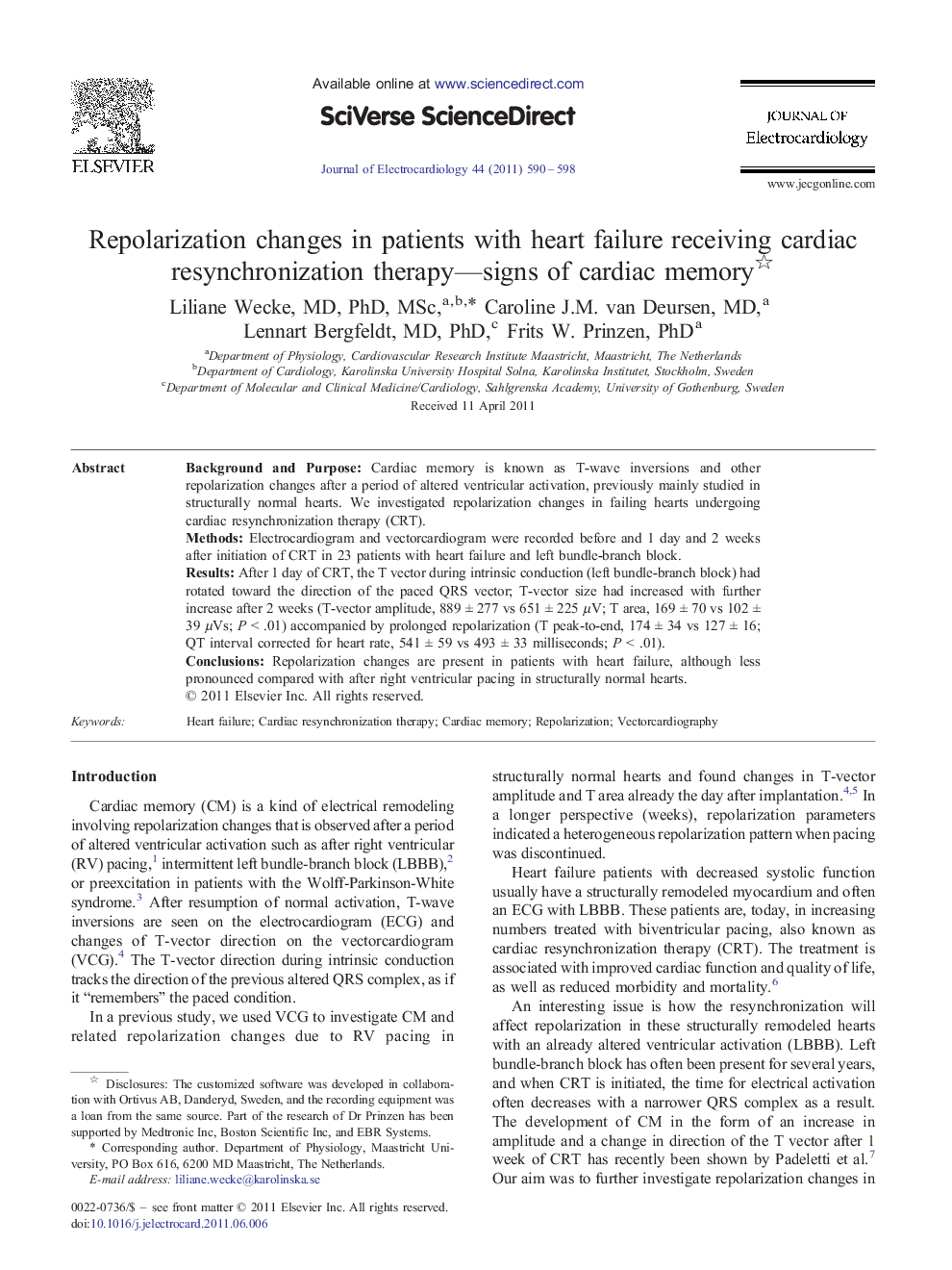| Article ID | Journal | Published Year | Pages | File Type |
|---|---|---|---|---|
| 2968460 | Journal of Electrocardiology | 2011 | 9 Pages |
Background and PurposeCardiac memory is known as T-wave inversions and other repolarization changes after a period of altered ventricular activation, previously mainly studied in structurally normal hearts. We investigated repolarization changes in failing hearts undergoing cardiac resynchronization therapy (CRT).MethodsElectrocardiogram and vectorcardiogram were recorded before and 1 day and 2 weeks after initiation of CRT in 23 patients with heart failure and left bundle-branch block.ResultsAfter 1 day of CRT, the T vector during intrinsic conduction (left bundle-branch block) had rotated toward the direction of the paced QRS vector; T-vector size had increased with further increase after 2 weeks (T-vector amplitude, 889 ± 277 vs 651 ± 225 μV; T area, 169 ± 70 vs 102 ± 39 μVs; P < .01) accompanied by prolonged repolarization (T peak-to-end, 174 ± 34 vs 127 ± 16; QT interval corrected for heart rate, 541 ± 59 vs 493 ± 33 milliseconds; P < .01).ConclusionsRepolarization changes are present in patients with heart failure, although less pronounced compared with after right ventricular pacing in structurally normal hearts.
